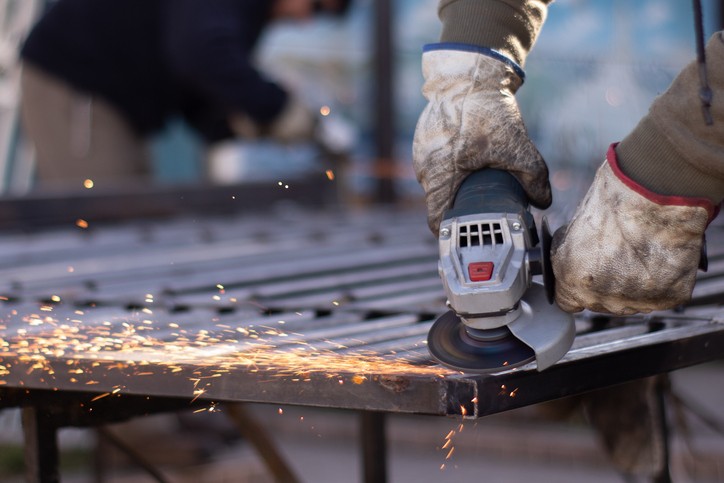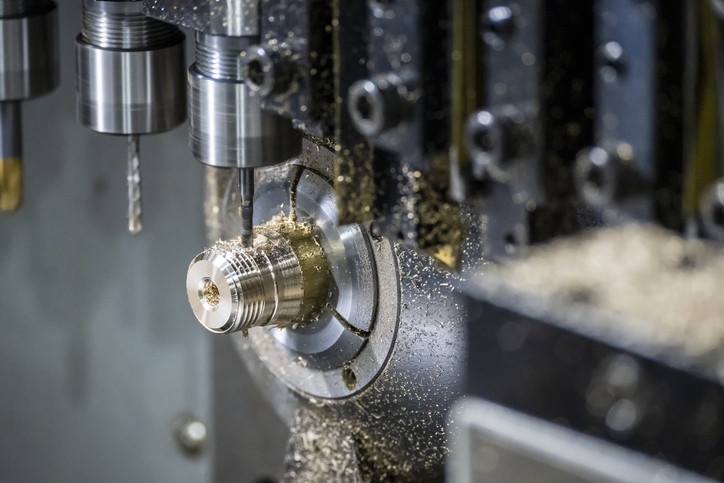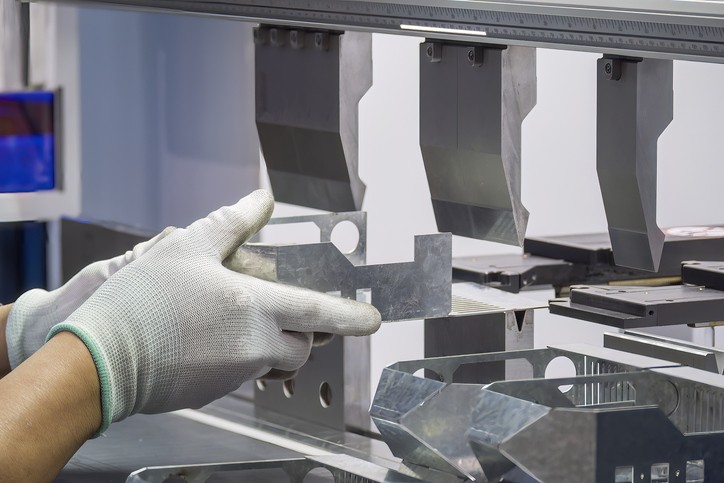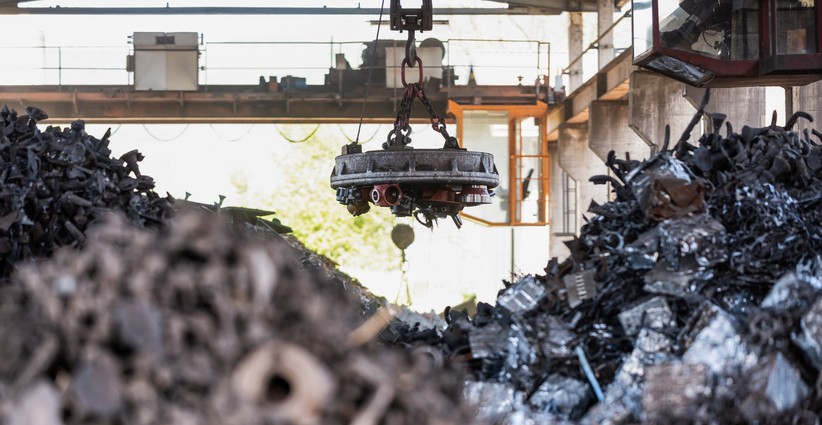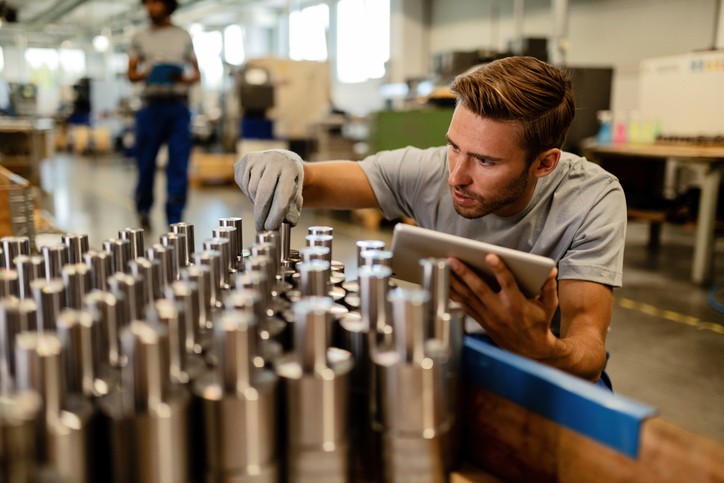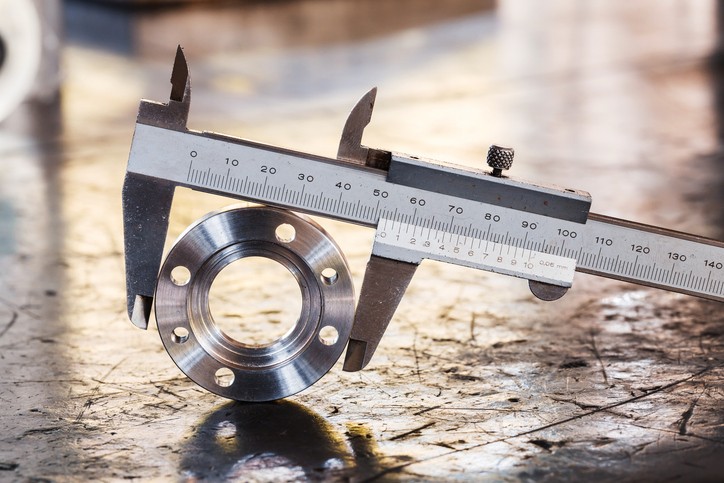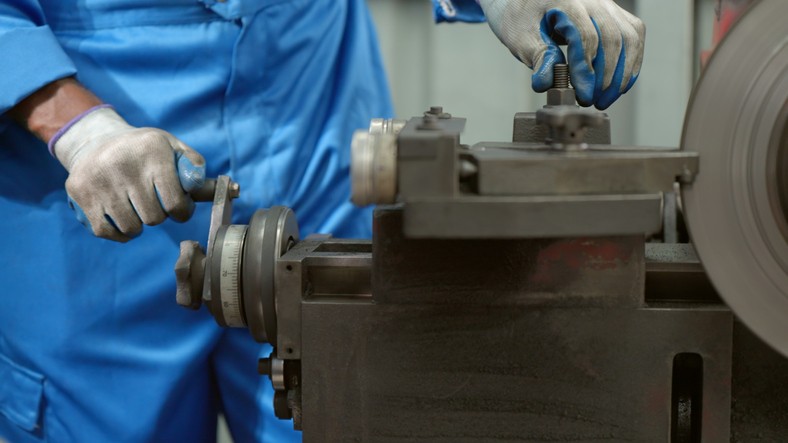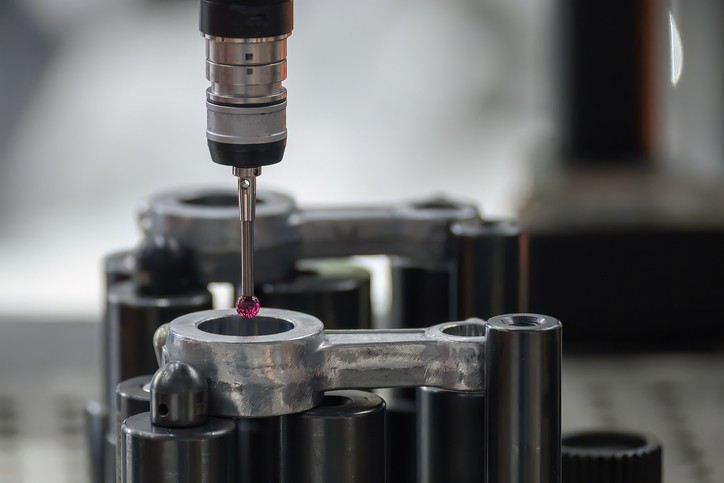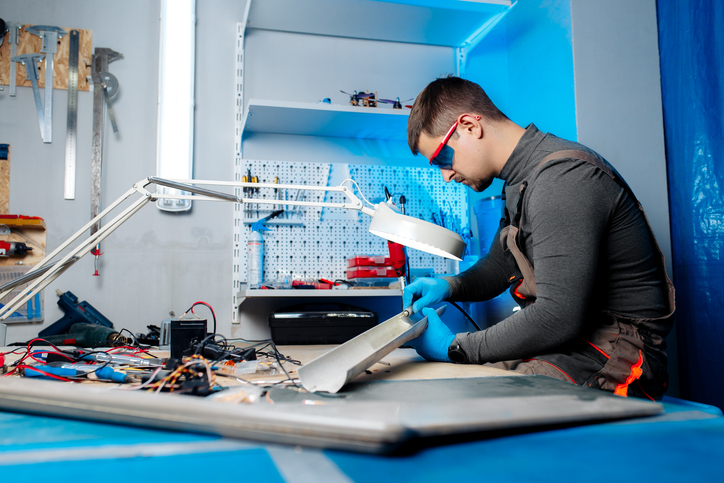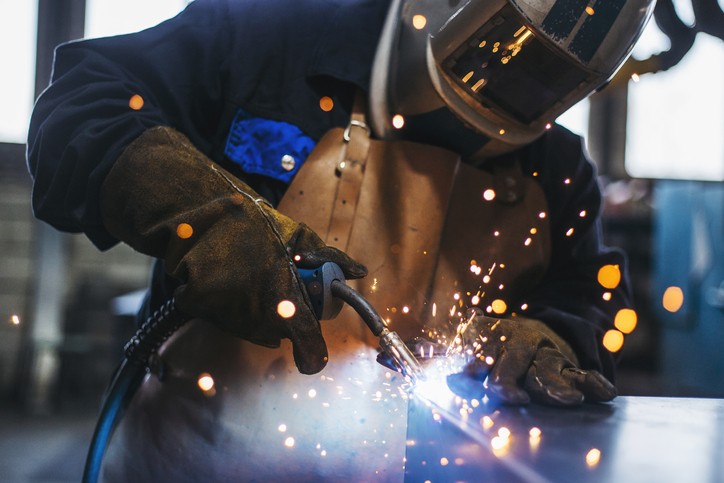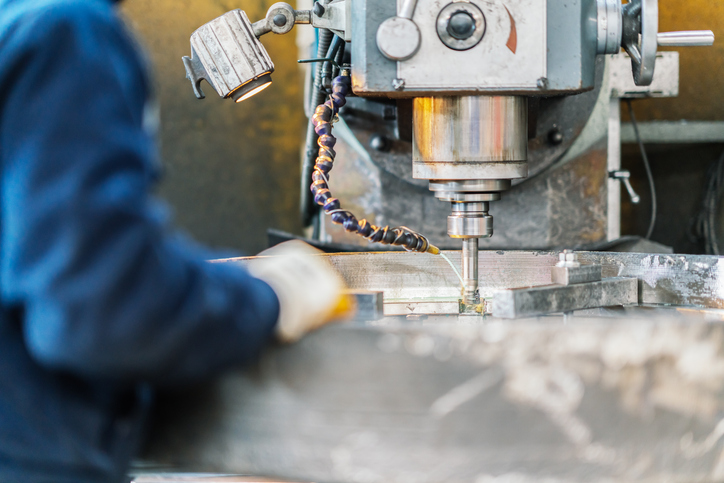- How Fabrication and Machining Work Together
- Benefits of Combining Fabrication and Machining Processes
- Challenges in Integrating Fabrication and Machining
- Innovations in Hybrid Manufacturing Techniques
- Environmental Impact of Fabrication and Machining
- Innovations Driving Sustainability in Manufacturing
- Importance of Quality Control in Manufacturing
- Quality Control Techniques in Fabrication
- Quality Control Techniques in Machining
- Standards and Certifications in Fabrication and Machining
- Future Trends in Fabrication and Machining Integration
- Conclusion
- FAQs
Fabrication and machining are fundamental processes in contemporary manufacturing, each of which plays a pivotal role in the transformation of raw materials into final products. Fabrication involves cutting, bending, and assembling materials, usually metals, to make structures and components. It encompasses various techniques, including custom aluminum fabrication, precision fabrication, and enclosure fabrication. Machining, on the other hand, involves removing materials from a component to attain the desired form and dimensions. Computer numerical control (CNC) aluminum machining is a common way of making things. It’s very precise and can be repeated many times.
Integrating fabrication and machining processes is vital for achieving optimal manufacturing outcomes. This integration enhances efficiency, reduces production time, and ensures higher product quality. By combining these processes, manufacturers can leverage the strengths of both methods, such as the versatility of metal fabrication services and the precision of machining. This synergy is particularly beneficial in custom aluminum manufacturing, precision steel fabrication, and fabricated metal manufacturing, where complex and high-quality components are required.
How Fabrication and Machining Work Together
The metal fabrication process involves several key steps: cutting, forming, and assembling. Cutting techniques include laser cutting, water jet cutting, and plasma cutting. Forming involves bending or shaping the metal using press brakes or rollers. Lastly, assembling involves welding, riveting, or using other fastening methods to join the components. Custom enclosure fabrication and aluminum fabrication are examples of specialized metal fabrication processes that cater to specific industry needs.
Explanation of Machining Processes
Machining processes include turning, milling, drilling, and grinding. Machine tools are used to remove materials from a workpiece and make it the right size and shape. CNC aluminum machining is a widely used method that utilizes CNC to guide the cutting tools, ensuring high precision and consistency. This method is especially good at making complex parts with tight tolerances.
Integration Points Between Fabrication and Machining
The integration of fabrication and machining processes occurs at several key points in the manufacturing workflow. For example, after an initial fabrication stage, such as cutting and forming metal sheets, machining can be used to add precise features and dimensions to the fabricated parts. It’s possible to create intricate and top-notch parts with just a bit of machining. Full-service manufacturing facilities often employ both processes to deliver comprehensive solutions, from initial design to final assembly.
Benefits of Combining Fabrication and Machining Processes
Enhanced Efficiency and Productivity
Combining fabrication and machining techniques results in enhanced effectiveness and productivity in the manufacturing sector. By integrating these processes, manufacturers can streamline their workflows, reducing the time required to move components between different stages of production.
This seamless transition between fabrication, such as custom aluminum fabrication, and machining, like CNC aluminum machining, minimizes downtime and increases throughput. Manufacturers can finish products faster to meet tight deadlines and respond quickly to market needs.
Cost Savings and Resource Optimization
Integrating fabrication and machining increases efficiency and leads to cost savings and resource optimization. By consolidating processes, manufacturers can reduce the need for multiple setups and transportation of parts between different facilities. This consolidation minimizes waste and lowers overall production costs.
For instance, combining the metal fabrication process with precision machining reduces material waste and optimizes the use of raw materials. Additionally, the integration of these processes can reduce labor costs by streamlining operations and requiring fewer workers to handle the same volume of work.
Improved Product Quality and Precision
One of the main benefits of combining fabrication and machining processes is improved product quality and precision. Fabrication processes, such as custom enclosure fabrication and aluminum fabrication, provide the foundational shapes and structures.
Machining processes, including precision fabrication and precision steel fabrication, then refine these structures to achieve exact dimensions and finishes. This makes sure that the finished products meet very high-quality standards and exact specifications. These processes allow for tight tolerances and high-quality finishes, which are important for industries like aerospace, automotive, and medical device manufacturing.
Flexibility and Customization in Manufacturing
The integration of fabrication and machining processes offers significant flexibility and customization in manufacturing. Manufacturers have the freedom to create numerous goods that cater to various client requirements. For example, custom aluminum manufacturing can be tailored to specific requirements, enabling the production of unique and complex components.
The ability to switch seamlessly between fabrication and machining processes allows for quick adjustments and modifications, making it easier to implement design changes and accommodate custom orders. This adaptability is crucial for full-service manufacturing operations that aim to provide comprehensive solutions to their clients.
Examples of Custom Aluminum Fabrication and Precision Fabrication
Several real-world examples show how fabrication and machining processes can work together. In custom aluminum fabrication, large sheets of aluminum are cut and formed into basic shapes through fabrication. These shapes are then refined and finished using CNC aluminum machining to achieve precise dimensions and complex geometries. Similarly, in custom enclosure fabrication, metal fabrication services create the initial enclosure structures, which are subsequently machined to incorporate specific features like mounting holes, slots, and precise edges.
Precision fabrication often involves the combination of both processes to produce high-precision components used in critical applications. For instance, in the aerospace industry, fabricated metal manufacturing and precision machining work together to produce intricate parts that meet exacting standards. This integration makes sure that each part fits perfectly and works perfectly in tough conditions.
Challenges in Integrating Fabrication and Machining
Technical and Engineering Challenges
Integrating fabrication and machining processes poses various technical and engineering challenges. One significant hurdle is the need for precise alignment between fabrication and machining operations. The metal fabrication process often involves large, unwieldy parts that require careful handling and positioning before machining can begin. Ensuring that these parts remain within tight tolerances throughout both processes demands sophisticated engineering solutions and robust quality control measures.
Additionally, custom aluminum fabrication and precision steel fabrication present unique technical challenges, as these materials require specialized handling and processing techniques to maintain their structural integrity and achieve the desired precision.
Coordination and Workflow Management
Effective coordination and workflow management are critical when integrating fabrication and machining. These processes must be seamlessly aligned to avoid bottlenecks and ensure smooth transitions from one stage to the next. This requires meticulous planning and scheduling, particularly in full-service manufacturing environments where multiple projects may be running concurrently.
The complexity increases with custom enclosure fabrication and other bespoke projects, where each component may follow a unique production path. Advanced project management tools and techniques are essential to coordinate these workflows, ensuring timely completion and minimizing disruptions.
Equipment Compatibility and Upgrades
Another challenge lies in ensuring equipment compatibility and making necessary upgrades. Fabrication and machining equipment often have different specifications and operational requirements. For instance, CNC aluminum machining centers must be compatible with the output from aluminum fabrication processes. Upgrading existing equipment to handle both fabrication and machining tasks can be costly and time-consuming.
Manufacturers must carefully assess their current capabilities and invest in versatile, multi-functional machines that can bridge the gap between these processes. Regular maintenance and calibration are also important to keep equipment working well and ensuring precision.
Skilled Labor and Training Requirements
The integration of fabrication and machining processes demands a highly skilled workforce. Employees must be proficient in both fabrication techniques, such as metal fabrication services and custom aluminum manufacturing, and machining operations, including CNC aluminum machining. Training programs are essential for workers to learn how to use advanced machinery and manage complex workflows.
Moreover, continuing professional development is critical to keep up with technological advances and industry best practices. Finding and retaining skilled labor can be challenging, making it significant for manufacturers to invest in their workforce and create a supportive learning environment.
Innovations in Hybrid Manufacturing Techniques
Hybrid manufacturing combines additive and subtractive processes to create components with enhanced functionality and precision. This approach integrates traditional fabrication methods with advanced machining techniques, allowing manufacturers to leverage the benefits of both.
For example, a hybrid manufacturing process might begin with the additive fabrication of a basic structure, followed by precision machining to achieve the final dimensions and surface finish. Complex geometries and intricate designs can be achieved using conventional methods alone.
Emerging Technologies in Hybrid Manufacturing
Several emerging technologies are driving innovations in hybrid manufacturing. Another notable advancement is the development of multi-axis CNC machines capable of performing both additive and subtractive operations. These machines are capable of fabricating and machining parts in a single setup, which significantly reduces production time and improves accuracy. Another innovation is the use of laser-based additive manufacturing techniques, which offer high precision and the ability to work with a wide range of materials, including metals and alloys.
In the realm of custom aluminum fabrication and precision fabrication, hybrid manufacturing techniques are proving particularly beneficial. For instance, custom enclosure fabrication can benefit from additive manufacturing’s ability to create complex internal structures, while machining ensures precise external dimensions and surface quality. These tools help manufacturers create high-quality products that meet the needs of their customers.
Environmental Impact of Fabrication and Machining
Assessing the Environmental Footprint
The environmental footprint of manufacturing processes, including fabrication and machining, is a significant concern in today’s industrial landscape. Assessing this footprint involves evaluating the energy consumption, resource usage, and waste generation associated with these processes. Fabrication processes, such as custom aluminum fabrication and precision steel fabrication, often require substantial energy inputs for activities like cutting, forming, and welding.
Similarly, machining operations, including CNC aluminum machining, consume large amounts of electricity and generate metal shavings and coolant waste. It is essential to understand the full environmental impact of these activities before developing strategies to mitigate their adverse effects.
Common Environmental Issues in Fabrication and Machining
Several environmental issues are prevalent in the fabrication and machining sectors. One major concern is the emission of greenhouse gases (GHGs) due to the high-energy consumption of machinery and equipment. Using fossil fuels for power makes this problem worse. Additionally, the metal fabrication process and machining generate significant amounts of waste materials, such as scrap metal, cutting fluids, and other hazardous substances.
Improper disposal of these wastes can lead to soil and water contamination. Furthermore, fabrication processes, including custom enclosure fabrication, often involve the use of chemicals and coatings that emit volatile organic compounds (VOCs), contributing to air pollution.
Strategies to Reduce Environmental Impact
To reduce the environmental impact of fabrication and machining, manufacturers can adopt several effective strategies:
- Energy Efficiency Improvements: Investing in energy-efficient machinery and optimizing production processes can significantly lower energy consumption. Regular maintenance schedules help equipment work at its best, which reduces energy use.
- Waste Minimization: Lean manufacturing and recycling can be used to minimize waste generation. Metal shavings and scrap from aluminum fabrication can be collected and reused, reducing the demand for fresh stuff and minimizing garbage from landfills.
- Sustainable Materials: Using sustainable and eco-friendly materials, such as recycled metals and biodegradable lubricants, can lessen the environmental impact. Choosing materials that consume less energy and emit fewer emissions can also contribute to environmental responsibility.
- Pollution Control Measures: Installing proper ventilation systems and using low-VOC coatings and chemicals can help reduce air pollution. Implementing robust waste management systems ensures the safe disposal of hazardous materials and prevents environmental contamination.
Innovations Driving Sustainability in Manufacturing
Green Manufacturing Technologies
Innovations in green manufacturing technologies are transforming the industry by promoting sustainable practices. Renewable energy sources are being used in manufacturing facilities to reduce the need for fossil fuels.
Additionally, the development of energy-efficient machines and processes, such as hybrid manufacturing techniques that combine additive and subtractive methods, helps lower energy consumption. These tools make manufacturing more efficient and less expensive, and help the environment.
Sustainable Materials and Processes
Adopting eco-friendly materials and methods is crucial for promoting eco-friendly production. Manufacturers are increasingly turning to recycled and renewable materials, such as recycled aluminum and bioplastics, to reduce their dependence on non-renewable resources. Processes like closed-loop recycling, where waste materials are continuously reused in the production cycle, are gaining traction.
Moreover, using additive manufacturing techniques like 3D printing can help use materials precisely, reduce waste, and save resources. These sustainable practices are particularly beneficial in custom aluminum manufacturing and fabricated metal manufacturing, where material efficiency is paramount.
Industry Initiatives for Sustainability
Many industry initiatives are focused on promoting sustainability in manufacturing. Organizations and industry groups are developing standards and certifications to encourage environmentally friendly practices. For example, the ISO 14001 certification provides a framework for effective environmental management systems, helping companies reduce their environmental impact.
Industry-wide initiatives, such as the Global Reporting Initiative and the Carbon Disclosure Project, promote openness and accountability in environmental performance. By participating in these initiatives, manufacturers can demonstrate their commitment to sustainability and gain a competitive edge in the market.
Importance of Quality Control in Manufacturing
Role of Quality Control in Manufacturing
Quality control (QC) is an important part of manufacturing, making sure that products meet specified standards and customer expectations. It is the process of keeping track of, assessing, and improving the quality of products at every stage of production. Effective QC helps identify defects early in the production process, reducing waste and rework, and ensuring that the final products adhere to the desired specifications.
In metal fabrication services, QC is crucial for maintaining the integrity and performance of fabricated components, such as those produced through custom aluminum fabrication and precision fabrication.
Impact of Quality Control on Product Performance and Customer Satisfaction
Quality control significantly impacts both product performance and customer satisfaction. High-quality products perform reliably and meet the stringent requirements of various applications, from custom enclosure fabrication to large-scale industrial projects. Quality that’s consistently good makes companies more trustworthy and loyal to their clients.
Moreover, rigorous QC processes help minimize returns and complaints, resulting in cost savings and improved efficiency. In competitive markets, such as those involving enclosure fabrication and custom aluminum manufacturing, maintaining high-quality standards can differentiate a manufacturer from its competitors, driving long-term success and customer satisfaction.
Quality Control Techniques in Fabrication
Inspection and Testing Methods in Metal Fabrication Services
Inspection and testing are fundamental QC techniques in metal fabrication services. Different methods are used to make sure that fabricated components meet the standards.
Here are some of the methods:
- Visual Inspection: The most basic form of inspection, visual checks are performed to identify obvious defects such as surface irregularities, weld flaws, and misalignment.
- Dimensional Inspection: Using precision measurement tools like calipers, micrometers, and coordinate measuring machines (CMM), dimensional inspection ensures that components conform to specified dimensions and tolerances.
- Non-destructive Testing (NDT): Techniques like ultrasonic testing, X-ray testing, and magnetic particle testing find problems inside and outside things without hurting them. These methods are particularly important in custom enclosure fabrication and other critical applications where structural integrity is paramount.
- Mechanical Testing: Tests like tensile, compression, and hardness testing assess the mechanical properties of materials and components, ensuring they can withstand operational stresses and loads.
Tools and Equipment for Quality Control
Effective quality control in fabrication relies on a range of specialized tools and equipment:
- Measurement Tools: Precision instruments, including calipers, micrometers, and CMMs, are essential for accurate dimensional checks. These tools make sure that parts meet the specifications and are compatible with other components.
- Testing Equipment: NDT equipment, such as ultrasonic flaw detectors and X-ray machines, allows for thorough inspection of internal structures. Mechanical testing machines evaluate material properties and performance.
- Software Solutions: Quality management software (QMS) systems help track QC processes, record inspection data, and generate reports. These systems enable continuous enhancement and adherence to industry norms.
- Environmental Chambers: For testing components in extreme temperatures and humidity to make sure they work well in real-world applications.
Best Practices for Ensuring Quality in Fabrication, Including Custom Enclosure Fabrication
To maintain high quality in fabrication, manufacturers should adhere to best practices that encompass all stages of production:
- Develop Clear Specifications: Ensure that all design and fabrication specifications are clearly defined and communicated to all stakeholders. This includes detailed drawings, material requirements, and tolerance limits.
- Implement Standardized Procedures: Establish and follow standardized procedures for each fabrication process, from material selection to final inspection. Consistency in processes helps maintain quality and reduces variability.
- Train and Certify Personnel: Regularly train employees on QC techniques and the use of inspection tools and equipment. Certification programs can help ensure that staff are qualified to perform critical QC tasks.
- Perform Regular Audits: Do regular checks to make sure everything is done right and to find ways to enhance it. Audits help ensure continuous adherence to best practices and industry standards.
- Use Feedback for Improvement: Collect and analyze feedback from inspections, testing, and customer complaints to identify common issues and implement corrective actions. Continuous improvement is the key to keeping high-quality standards.
By prioritizing quality control in fabrication and machining, manufacturers can produce high-performance, reliable products that meet customer expectations and industry standards. This commitment to quality is essential for achieving optimal manufacturing outcomes and sustaining long-term success in the competitive fabrication industry.
Quality Control Techniques in Machining
Precision Measurement and Testing
Precision measurement and testing are critical for ensuring the quality of machined components. These techniques involve using high-accuracy instruments to verify that parts meet the required dimensions and tolerances.
Key methods include:
- Coordinate Measuring Machines (CMMs): These devices use probes to measure the physical geometries of an object with high precision. CMMs are essential for verifying the dimensions of complex parts in CNC aluminum machining and precision steel fabrication.
- Laser Scanning: Laser scanners create detailed 3D models of parts, allowing for comprehensive inspections of their geometrical features. This technology is invaluable for detecting minute deviations from design specifications.
- Surface Roughness Testing: Surface roughness testers measure the texture of a surface, which is crucial for ensuring that machined parts meet specific finish requirements. This is especially relevant in situations where the surface’s smoothness affects both performance and appearance.
Advanced Quality Control Technologies
Advancements in quality control technologies have revolutionized the manufacturing industry, enabling more efficient and accurate inspections.
Key innovations include:
- Automated Optical Inspection (AOI): AOI systems use cameras and computer programs to check parts for problems. This technology accelerates the inspection process and reduces human error, enhancing the quality control of metal fabrication processes.
- Non-Contact Metrology: This method involves using sensors and lasers to measure parts without physical contact, preserving delicate surfaces and allowing for rapid inspections.
- In-Line Inspection Systems: Real-time monitoring and immediate feedback are provided by in-line inspection systems. In-line inspection is crucial for maintaining consistent quality during high-volume manufacturing.
Best Practices for Ensuring Quality in CNC Aluminum Machining and Precision Steel Fabrication
Implementing best practices is essential for maintaining high-quality standards in CNC aluminum machining and precision steel fabrication.
These practices include:
- Establishing Clear Specifications: Ensure that all design and production specifications are well-documented and communicated to the entire team. This includes detailed drawings, material requirements, and tolerance limits.
- Regular Calibration: Regularly calibrate measurement instruments and machines to maintain accuracy. Calibration ensures that tools provide reliable data, which is essential for precise machining.
- Continuous Training: Train employees to keep them updated on the latest quality control techniques and technologies. Skilled personnel are crucial for identifying and addressing potential quality issues.
- Implementing Statistical Process Control (SPC): Use SPC methods to monitor and control the manufacturing process. Trends and variations can be detected by analyzing process data.
- Conducting Root Cause Analysis: When defects are identified, perform a root cause analysis to determine the underlying issues. Corrective actions are needed to prevent recurrence and improve overall quality.
Standards and Certifications in Fabrication and Machining
Overview of Relevant Industry Standards
Specific quality and safety standards are enforced by industry guidelines. Key standards relevant to fabrication and machining include:
- ISO 9001: This standard outlines the requirements for a quality management system (QMS). It aids businesses in ensuring they consistently deliver goods that meet client and regulatory standards.
- ISO 14001: This standard helps companies reduce environmental impact and improve sustainability in manufacturing processes.
- AS9100: Specific to the aerospace industry, AS9100 includes additional requirements beyond ISO 9001, emphasizing product safety and reliability.
- IATF 16949: This standard is designed for the automotive industry and incorporates ISO 9001 requirements with additional criteria for automotive production and service parts.
Certification Programs and Their Importance
Certification programs validate that a manufacturing facility adheres to established standards, providing assurance to customers and stakeholders. Important certifications include:
- ISO Certification: Obtaining ISO 9001 or ISO 14001 certification demonstrates a commitment to quality and environmental management, enhancing the organization’s reputation and competitive edge.
- AS9100 Certification: It is important for aerospace manufacturers to meet the strict quality requirements of the industry.
- IATF 16949 Certification: This certification is essential for automotive suppliers, ensuring that their processes meet the rigorous standards of the automotive sector.
Compliance and Auditing Processes
Maintaining compliance with industry standards involves regular auditing and continuous improvement.
Key steps include:
- Internal Audits: Check compliance with standards and find areas for improvement. Internal audits help ensure that quality management systems are functioning effectively.
- External Audits: Engage independent auditors to conduct external audits and verify compliance with certification requirements. External audits provide an objective assessment of the organization’s quality and environmental management practices.
- Continuous Improvement: Use audit findings to take corrective action and improve continuously. Regularly reviewing and updating processes helps maintain compliance and enhances overall performance.
Future Trends in Fabrication and Machining Integration
Predictive Maintenance and Smart Manufacturing
The future of fabrication and machining integration is being shaped by predictive maintenance and smart manufacturing. Predictive maintenance employs data analytics, sensors, and machine learning to anticipate equipment failures prior to their occurrence. This proactive approach helps reduce downtime, make machines last longer, and save money on maintenance.
Smart manufacturing uses the Internet of Things (IoT) to connect things and control things in real-time. This connectivity ensures that the entire metal fabrication process, from custom aluminum fabrication to CNC aluminum machining, is optimized for efficiency and precision.
The Role of AI and Automation in Integration
Artificial intelligence and automation are transforming the world of fabrication and machining. AI algorithms can analyze a lot of data to find patterns and improve processes, enhancing precision fabrication and custom aluminum manufacturing. Automation reduces human error and increases production speed.
High-precision and consistency can be achieved by automated CNC aluminum machining. The integration of AI and automation improves product quality and makes the manufacturing process more agile and responsive to changing demands.
Future Prospects for Integrated Manufacturing, Including Custom Aluminum Manufacturing and Fabricated Metal Manufacturing
The future of integrated manufacturing looks promising, with significant advancements expected in custom aluminum manufacturing and fabricated metal manufacturing. As technology continues to evolve, manufacturers will be able to produce highly customized and complex components more efficiently. Innovations such as additive manufacturing (3D printing) will complement traditional fabrication and machining processes, allowing for greater design flexibility and material efficiency.
Moreover, the industry will move towards greener manufacturing solutions by adopting sustainable practices and materials. The integration of these technologies will enable full-service manufacturing providers to offer comprehensive solutions, meeting the diverse needs of their clients while maintaining high standards of quality and sustainability.
Conclusion
Integrating fabrication and machining procedures offers numerous advantages, including enhanced effectiveness, financial savings, enhanced product performance, and increased flexibility in production. Quality control techniques and advanced technologies help make sure that products meet the highest standards. Responsible manufacturing requires understanding the environment and using sustainable practices.
The path forward for integrated manufacturing involves embracing predictive maintenance, smart manufacturing, AI, and automation. These improvements will keep making things faster and better in the business. This will help manufacturers make better and more unique products. Manufacturing will be more responsive, sustainable, and cost-effective if these technologies are integrated seamlessly.
Full-service manufacturing is critical for industry success, as it provides comprehensive solutions that encompass all stages of production, from design and fabrication to machining and assembly. This approach ensures that manufacturers can meet the diverse needs of their clients, offering custom aluminum fabrication, precision fabrication, custom enclosure fabrication, and more.
Ready to Elevate Your Manufacturing Process?
Discover how integrating fabrication and machining can revolutionize your manufacturing operations. Whether you need custom aluminum fabrication, precision steel fabrication, or full-service manufacturing solutions, our expert team is here to help.
Contact us today to learn more about our advanced manufacturing services and how we can meet your unique needs. Let’s drive your success together!
FAQs
How does custom aluminum fabrication differ from standard metal fabrication?
Custom aluminum fabrication involves creating customized aluminum components that meet specific design requirements and applications. Unlike standard metal fabrication, which often uses generic processes and designs, custom aluminum fabrication focuses on precision and customization.
This process includes specialized techniques such as precision fabrication, custom enclosure fabrication, and the use of advanced CNC aluminum machining to achieve exact specifications. Custom aluminum fabrication is ideal for projects requiring unique shapes, sizes, and features that are not achievable through conventional fabrication methods.
What quality control measures are essential in precision steel fabrication?
Quality control in precision steel fabrication is critical to ensure that the final products meet stringent standards and perform reliably. Key quality control measures include:
- Precision Measurement and Testing: Using tools like coordinate measuring machines (CMMs) and laser scanners to verify dimensions and tolerances.
- Non-Destructive Testing (NDT): Techniques such as ultrasonic testing and radiographic testing to detect internal defects without damaging the components.
- Surface Roughness Testing: Ensuring that the surface finish meets the required specifications.
- Regular Calibration: Maintaining accuracy of measurement instruments and machinery through regular calibration.
- Statistical Process Control (SPC): Monitoring and controlling the manufacturing process to detect and correct variations.
Why should I integrate fabrication and machining processes in my manufacturing operations?
Integrating fabrication and machining processes enhances efficiency by streamlining workflows, reduces costs through optimized resource use, and improves product quality with higher precision and consistency. This integration offers greater flexibility for custom solutions, shortens lead times, and ultimately boosts overall performance, quality, and customer satisfaction, giving you a competitive edge in the market.

